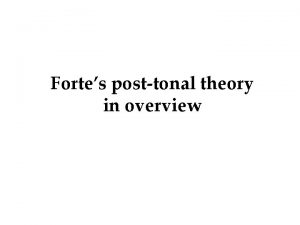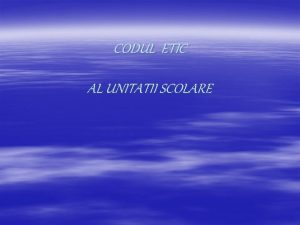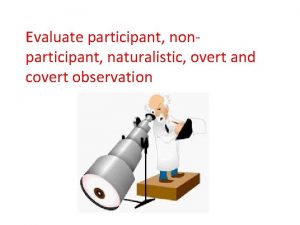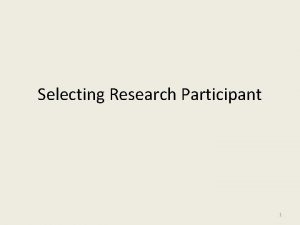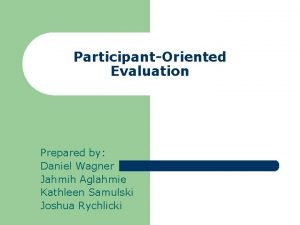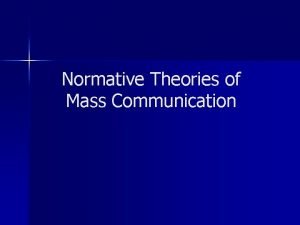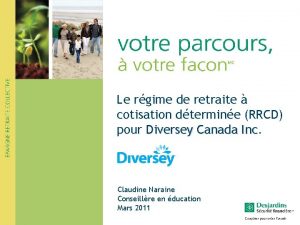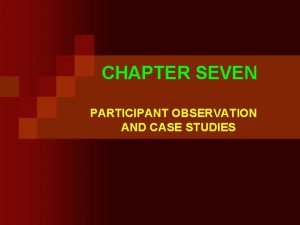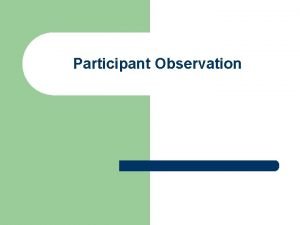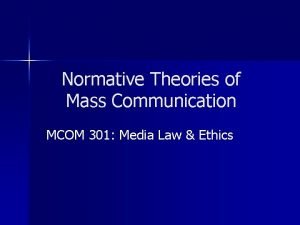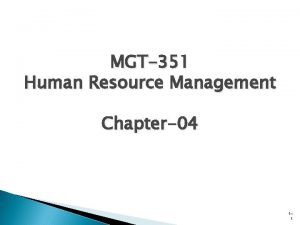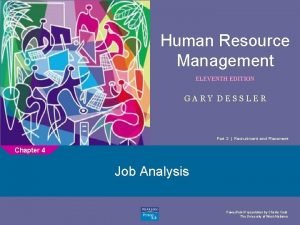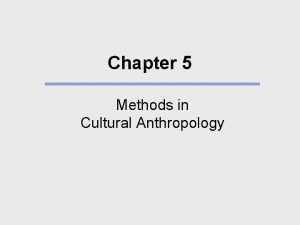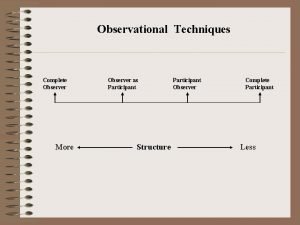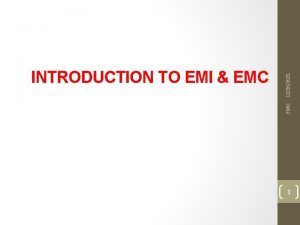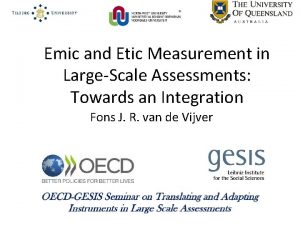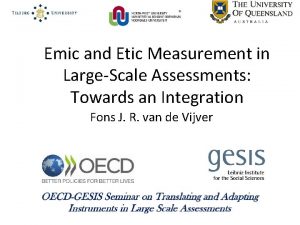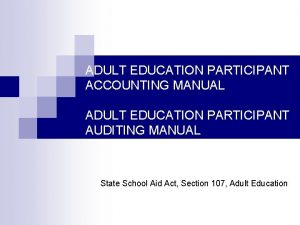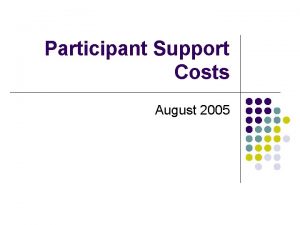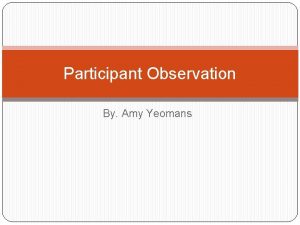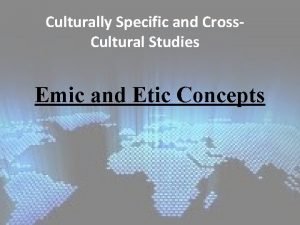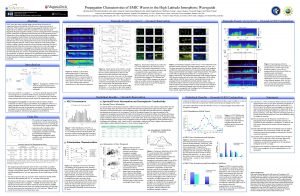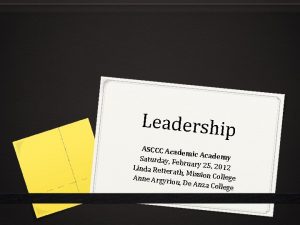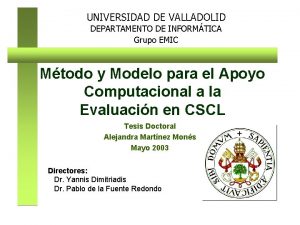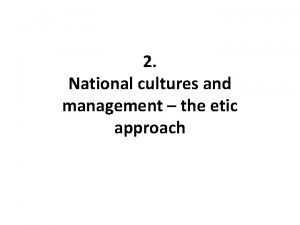Culture and Culture change Emic and etic Participant


































- Slides: 34

Culture and Culture change • Emic and etic • Participant observation • Cultural relativism – objectivity – Marvin Harris, Franz, Boas, Ruth Benedict, Margaret Meade • Culture – Material culture – Subculture – Society • Ethnocentrism • Acculturation and assimilation – Multiculturalism • Diffusion • Revolution • Globalization

Three divisions of culture 1. Infrastructure – Production – Reproduction 2. Structure – Allocation, regulation & exchange of goods & labor – Domestic economy – Political economy 3. Superstructure – – Religion Arts & literature Science Sports & recreation

Economics Definition of Economy – Modes of Subsistence I. Food Collectors – Hunter-gatherers/Foragers • Australian aborigines • Kwakiutl – Pacific Northwest • !Kung San – southern Africa – Richard Lee II. Food Producers 1. Horticulturalists – extensive shifting agriculture • Yanomamö – Amazon region of Brazil/Venezuela 2. Pastoralists • Animal husbandry • Saami of Scandinavia • Baluch

3. Intensive agriculture – permanent field cultivation • Irrigation • Terracing • Specialized equipment – plows, waterwheels, etc. Intensification of Food Production – Esther Boserup – 3 theories of food production in the Near East • Population growth in areas of abundant wild resources push people to marginal areas • Global population in world’s most habitable areas forced broader spectrum of resources • Climate change

Distribution of goods and resources 1. Reciprocity – Foragers, Extensive and Intensive agriculturalists A. Generalized Reciprocity • Silent trade • San and G//ana in the Nyae area of Namibia – Richard Lee • Kinship embedded reciprocal exchange B. Balanced Reciprocity • Barter

2. Redistribution – Extensive & Intensive farmers, Herders, Fishers – Marvin Harris – redistribution and agriculture A. Egalitarian Redistribution B. Stratified Redistribution • Modest providers • Competition and boastfulness – Kwakiutl Potlatches • Competitive feasting – Melanesians • Trade partnerships – B. Malinowski and Kula trade of Trobriand Islands – metaphorical “kin”

3. Market or Commercial Exchange – Intensive agriculturalists & Herders – Commercial agriculture (Agribusiness) – Industrialization – Hawala – clandestine remittances – Industrial Capitalism – Primitive Capitalism – Kapauka of New Guinea – Money (price market) - $$$ • Allocation of resources – private property vs. communal land • Economic Production – Forced and required labor • Corvée – Division of labor • Marvin Harris

Social Stratification 1. Egalitarian Societies – !Kung San (southern Africa) – Australian Aborigenes – Yanomamö (Venezuelan Amazon) 2. Rank Societies – Samoans, Tahitians, Trobriand islanders 3. Class Societies – USA, India, Inca, Aztec, Romans, etc. – Caste – Slavery

Marriage, Family and Kinship Marriage and legitimacy • Ritual husband – Nayar of Kerala, India – Dahomey of West Africa – Kwakiutl • Economic aspects of marriage – Bride-price • Bathonga of Africa – Bride-service – Groom-price – Dowry • Arabs • India • parts of Eastern and Southern Europe

• Who to marry and who not to marry? • • Incest taboo Arranged marriages Exogamy and endogamy Cousin marriage – Cross cousins – Parallel cousins • How to marry? • Polygamy – – • Polygyny – sororal and nonsororal » Sioux Indians - Sitting Bull » traditional Muslims Polyandry – fraternal and nonfraternal » Tibetans » Toda of India » Sinhalese of Sri Lanka Monogamy

Family and Kinship • Nuclear/monogamous family – Modern USA, !Kung San of Kyae • Independent family • Extended family – Taiwan • Marital residence patterns – Patrilocal – Matrilocal – Bilocal – Avunculocal – Neolocal

Kinship • Rules of descent – common ancestor I. Unilineal descent 1. 2. – – Patrilineal descent matrilineal descent Lineages Clans Phratries Moieties II. Ambilineal descent III. Bilateral kinship – two-sided – Kindred • Ego

Kinship Patterns

Kinship Patterns

Political Life Political org. Social org. Band • Headman Tribe • Big men/ women Chiefdom • Chief State • King Econ. org Egalitarian Foraging societies Egalitarian Extensive societies agric. , Herding Rank Intensive or societies Extensive agric. , Herd. Class/caste Intensive societies agric. , Herd. Distribution Reciprocity & Redistrib Market exchange

Religion and Magic Variation in religious beliefs • Religion • Supernatural • Mana vs. taboo • Supernatural beings – Gods – Spirits & ghosts • Monotheistic vs. polytheistic

Religion and Magic Variation in religious practices • Rituals • Divination • Magic – Sorcery – Witchcraft • Practitioners – Shamans – Sorcerers & witches – Mediums – Priests

Study Questions • The spread of contemporary cultural traits around the world, such as fast food chains like Mc. Donalds, foods such as ramen noodles, tortilla chips, hamburgers, and sushi, and world trade is most commonly referred to now days as A. B. C. D. • • Acculturation Assimilation Diffusion Globalization Marvin Harris’ paradigm of cultural relativism is based on A. B. C. D. objectivism ethnocentrism environmental determinism Racism A. B. C. D. Trobrianders Kwakiutl !Kung San Yanomamö Richard Lee gave a cow for Christmas and was ridiculed for his “worthless meat. ” The hunter/gatherers who responded in this manner were the

• Kula trade with its system of “metaphorical kin” is practiced among the A. B. C. D. Trobrianders Kwakiutl !Kung San Yanomamö • Totem poles and Potlatches are common in the northwestern USA and western Canada among the A. B. C. D. Trobrianders Kwakiutl !Kung San Yanomamö A. B. C. D. hunter/gatherer shifting cultivation intensive farming commercial • Which type of economy is probably the most egalitarian?

1. Which type of economy can be associated mostly with reciprocity? A. B. C. D. 1. Which type of economy is more closely associated with class/caste-based societies of the industrialized nations? A. B. C. D. 2. hunter/gatherer shifting cultivation intensive farming both A and B hunter/gatherer shifting cultivation intensive farming market/commercial Cold and dry climates are often associated with which type of economy? A. B. C. D. hunter/gatherer pastoralism intensive farming both A and B

• Humid tropical/rainforest environments are often associated with which economy? A. B. C. D. hunter/gatherer shifting cultivation intensive farming market/commercial • Mechanization and agribusiness are associated with which economy? • Horticulturalists in the Amazon include which culture? A. B. C. D. !Kung San Inuit Yanomamö Kwakiutl

• Which culture is considered a classic example of rank and redistribution? A. B. C. D. !Kung San Australian Aborigines Kwakiutl United States • Which culture is considered a classic example of a market economy? A. B. C. D. !Kung San Australian Aborigines Kwakiutl United States • Disparity in material wealth tends to be rare or lowest among A. B. C. D. foragers horticulturalists and pastoralists traditional intensive farmers market capitalists

• Racism is an unfortunate circumstance that tends to be more common in societies that are based on A. B. C. D. egalitarianism reciprocity rank class/caste • The kind of descent pattern that is common in modern industrialized societies is A. B. C. D. Bilateral Ambilineal Patrilineal Matrilineal • The kind of descent pattern that is common in most traditional farming societies is A. B. C. D. Bilateral Ambilineal Patrilineal Matrilineal

• The kind of descent pattern that is common in simple hunter gatherer societies is A. B. C. D. Bilateral Ambilineal Patrilineal Matrilineal • A payment to the groom’s family for accepting a new bride is known as a A. B. C. D. bride-price bride service dowry groom price • A payment to the bride’s family in order to compensate for their loss of a mother-wife is known as a A. B. C. D. bride-price bride service dowry groom price

• A payment made to the groom’s family to compensate for their loss of a father-husband is known as a A. B. C. D. bride-price bride service dowry groom price • The practice of a man having multiple wives is known as A. B. C. D. monogamy polygyny polyandry • The practice of a woman having multiple husbands is known as A. B. C. D. monogamy polygyny polyandry

• Which type of marital arrangement is most common in our society as well as in many hunter/gatherer societies? A. B. C. D. patrilocal matrilocal avunculocal Neolocal • The shaman in the Shaman’s Apprentice is associated with a A. B. C. D. leopard jaguar tiger monkey • In the Shaman’s Apprentice, the Maroons were people whose ancestry was A. B. C. D. Amerindian African English Dutch

• The socio-political organization in which a single leader is usually absent is a A. B. C. D. band tribe chiefdom state • In a traditional state level of political organization the leader would most likely be a A. B. C. D. headman chief king big man • The socio-political organization which is characterized by a “headman”, or a “headwoman”, is a A. B. C. D. band tribe chiefdom State

• Societies that are associated mostly with rank and redistribution are based on which type of political organization? A. B. C. D. band tribe chiefdom state • Societies that are associated with class and market exchange are based which type of political organization? A. B. C. D. band tribe chiefdom state • Societies that are associated with mostly intensive (and commercial) agriculture usually are based on which type of political organization? A. B. C. D. band tribe chiefdom State

• Societies that are associated with mostly extensive/shifting agriculture usually are based on which type of political organization? A. B. C. D. tribe chiefdom state both A and B • Societies that are associated with foraging and food collecting usually are based on which type of political organization? A. B. C. D. band tribe chiefdom state • A part-time religious practitioner with a respectable status in a tribal society is most commonly known by anthropologists as a A. B. C. D. sorcerer shaman priest witch

• A part-time religious practitioner who specializes in supernatural malevolence and has a less-than-respectable status in a tribal society is known as a A. B. C. D. sorcerer shaman priest Medium • The Day of the Dead in Mexico and Guatemala manifests the worship of A. B. C. D. gods demons mana ancestor spirits • The practice of voodoo, whether for benevolent or malevolent purposes, is most accurately associated with A. B. C. D. religion sorcery witchcraft Magic

• Supernatural beings that are the most anthropomorphic in nature are known as A. B. C. D. gods taboos mana spirits • Supernatural beings that are impersonal forces such those that can be found in rocks are known as A. B. C. D. gods taboos mana spirits • Supernatural beings that are associated with things that are prohibited or considered to be harmful are known as A. B. C. D. gods taboos mana Spirits

• The earliest form of supernatural beings to emerge in the evolution of human culture were A. B. C. D. gods mana ghosts ancestral spirits • A full-time religious practitioner which is more common in more complex societies is known as a A. B. C. D. sorcerer shaman priest Medium • Formal hierarchical religions such as Islam, Christianity or Hinduism are more typical of a social structure that is A. B. C. D. egalitarian ranked-based class-based all of these

• Religions of ancient civilizations such as the Mayan, Aztec, Inca, and Egyptian placed greatest importance on which type of practitioners? A. B. C. D. shamans priests sorcerers witches • Sacrifice and offering are most closely associated with A. B. C. D. magic sorcery witchcraft Divination

Essays • Explain how religion, nature, and science are all directly intertwined in traditional societies and the importance of the roles of ethnobotanists and shamans such as featured in the Shaman’s Apprentice. • Explain the progression from simple to most advanced cultures based on social, political, economic, and religious organization. Make comparisons and cite examples where possible. • Explain the entire process, whereby humans evolved from foragers to farmers and to civilizations and from egalitarian to rank and to class-based societies and why these transitions in technology and economic and political complexity took place only in certain regions and not in others.
 Emic vs etic examples
Emic vs etic examples Emic vs etic
Emic vs etic Endoculturación
Endoculturación Pozzetto di cacciata emic
Pozzetto di cacciata emic Emic forte
Emic forte Care este pozitia formelor neaccentuate
Care este pozitia formelor neaccentuate Educatia este arta de a face omul etic
Educatia este arta de a face omul etic Mag etic
Mag etic Etic moral
Etic moral Covert observation
Covert observation Tlr participant worksheet answers
Tlr participant worksheet answers Transferring lifting repositioning
Transferring lifting repositioning Participant sample
Participant sample Jumlah entity yang berpartisipasi dalam suatu relationship
Jumlah entity yang berpartisipasi dalam suatu relationship Participant oriented evaluation approach
Participant oriented evaluation approach Participant tracking system
Participant tracking system Normative theory of mass media
Normative theory of mass media Dsf.ca/participant
Dsf.ca/participant Participant-driven research
Participant-driven research Observation advantages and disadvantages
Observation advantages and disadvantages Participant media
Participant media Horizon 2020 portal
Horizon 2020 portal Overt observation advantages and disadvantages
Overt observation advantages and disadvantages Democratic participant media theory
Democratic participant media theory Job description and job specification in hrm
Job description and job specification in hrm Participant tracking software
Participant tracking software Participant diary/log
Participant diary/log Carmen heijligers
Carmen heijligers Authoritarian theory of mass communication
Authoritarian theory of mass communication Narrative ethnography
Narrative ethnography Sahmsa
Sahmsa Eacea participant portal
Eacea participant portal Safe at home participant
Safe at home participant Complaint against depository participant
Complaint against depository participant Complete observer
Complete observer




